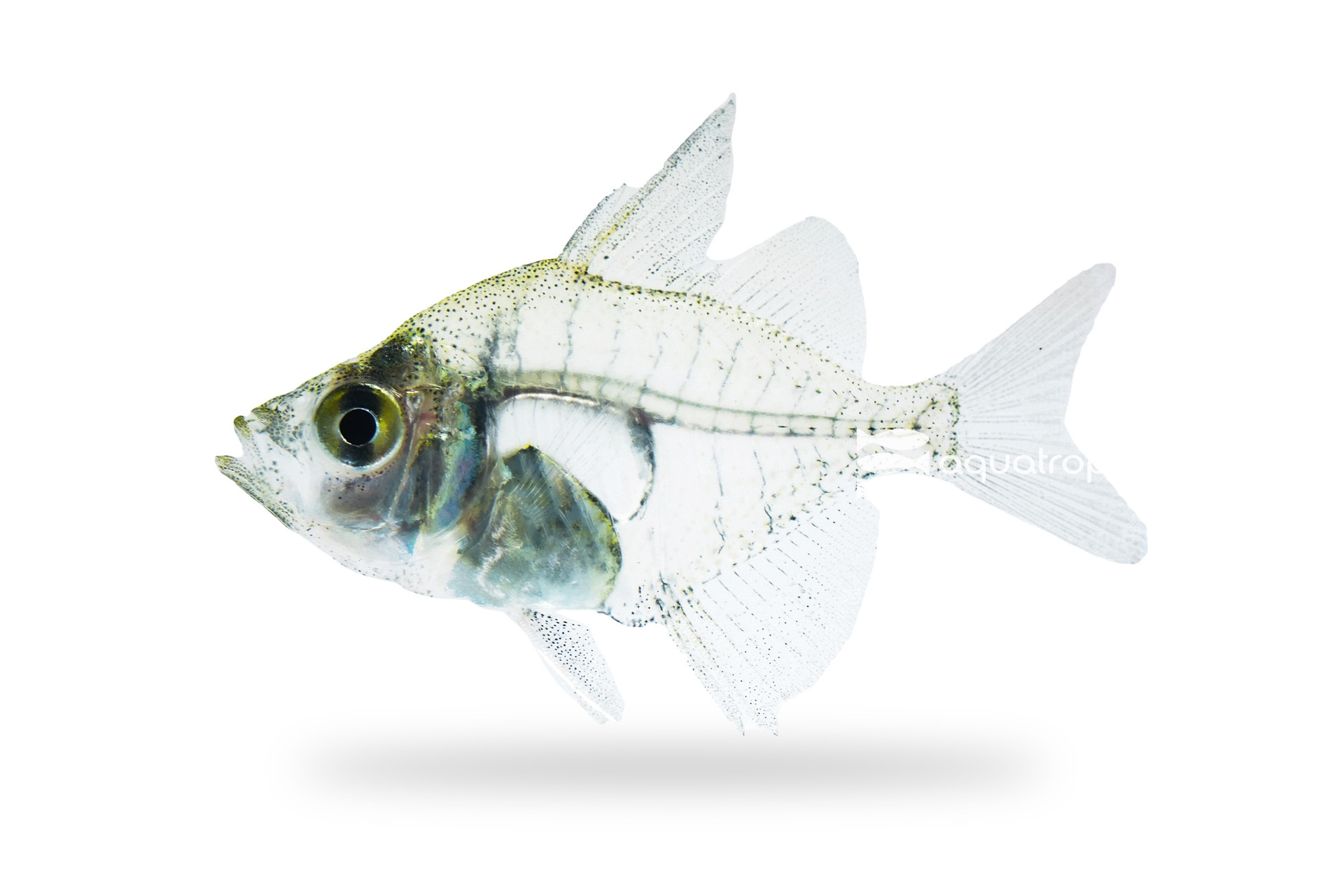Glass Half Full

Parambassis lala is more commonly known as the Highfin Glassy Perchlet. It is one of a few fish commonly imported from South East Asia as a “Glassfish.” Almost all of the fish imported as such come from the genus Parambassis. P. lala can be differentiated from these other by the three vertical bars behind the eye, and its small adult size. These fish aren't that common in the aquarium trade, which is unfortunate as they are a lovely fish, well sized and suited to aquarium environments.
For many years, before the popularity of the patented and genetically altered glofish, Parambassis genus fish were commonly injected with dyes to make them colorful. This cruel and unusual practice had the predictable result of generally killing most of the fish within a few months of treatment. Partially as a result of active campaigns against this practice, and partially as a result of the glofish replacing them in the wacko-color department, dyed versions of Parambassis have virtually (and thankfully) disappeared from fish store shelves. This practice, combined with the naturally short life span of these fish led many aquarists to believe these were more difficult to keep than is reality.
Glassy Perchlets are a very timid shoaling fish. They should always be kept in the largest group possible in your display, we recommend no less than 8, which makes for a ton of beautiful activity. Luckily, the very small adult size (1.5in) of these fish allows for this kind of stocking in achievable aquarium sizes. Displays should be densely planted, with darker substrates because somewhat counter intuitively, giving shy fish ample places to hide generally makes them less likely to do so. Tank mates should be docile as the glassfish are easily picked on. Good choices would be small tetras, rainbowfish, loaches etc.
There are lots of myths about water chemistry being extraordinarily important for these fish, and we've found just about all of these to be inaccurate. Happy fish are more dependent on good decor and tankmate choices than on any single water parameter. Additional salt is not needed in your glassfish aquarium; conversely the use of trace salts will not hurt them either. While these fish can be acclimated to brackish environments, there are generally collected from slow moving or still freshwater locations. We have great long term success keeping them in neutral (or almost neutral) pH water that is about 80 degrees Fahrenheit.
We have found the Highfin Perchlet to be very easy to feed. In house, we give them a mix of thawed foods like bloodworms and blackworms, small freshwater mysis etc. If they are fed these foods with a mix of prepared small pellets or flake, they generally segue to these more processed foods readily. A good mix of foods seems to keep them more colorful as well. While the attraction of this fish is its clear body, the males will get a neon blue fringe as they mature.
Breeding Parambassis lala is relatively straightforward, pairs will form out of the larger shoal and they can be induced to spawn with warm water. However, rearing the fry has proven prohibitively difficult for most hobbyists and indeed most aquaculture facilities; as a result, the majority of Parambassis genus fish we see are wild caught, and so choosing fish from sustainable vendors like us here at Aquatropic is very important for the long term viability for these fish. If you're looking for a small (but not tiny) different shoaling fish for your planted aquarium, the Highfin Glassy Perchlet should be on your radar. Ask your LFS to get you some from Aquatropic today!